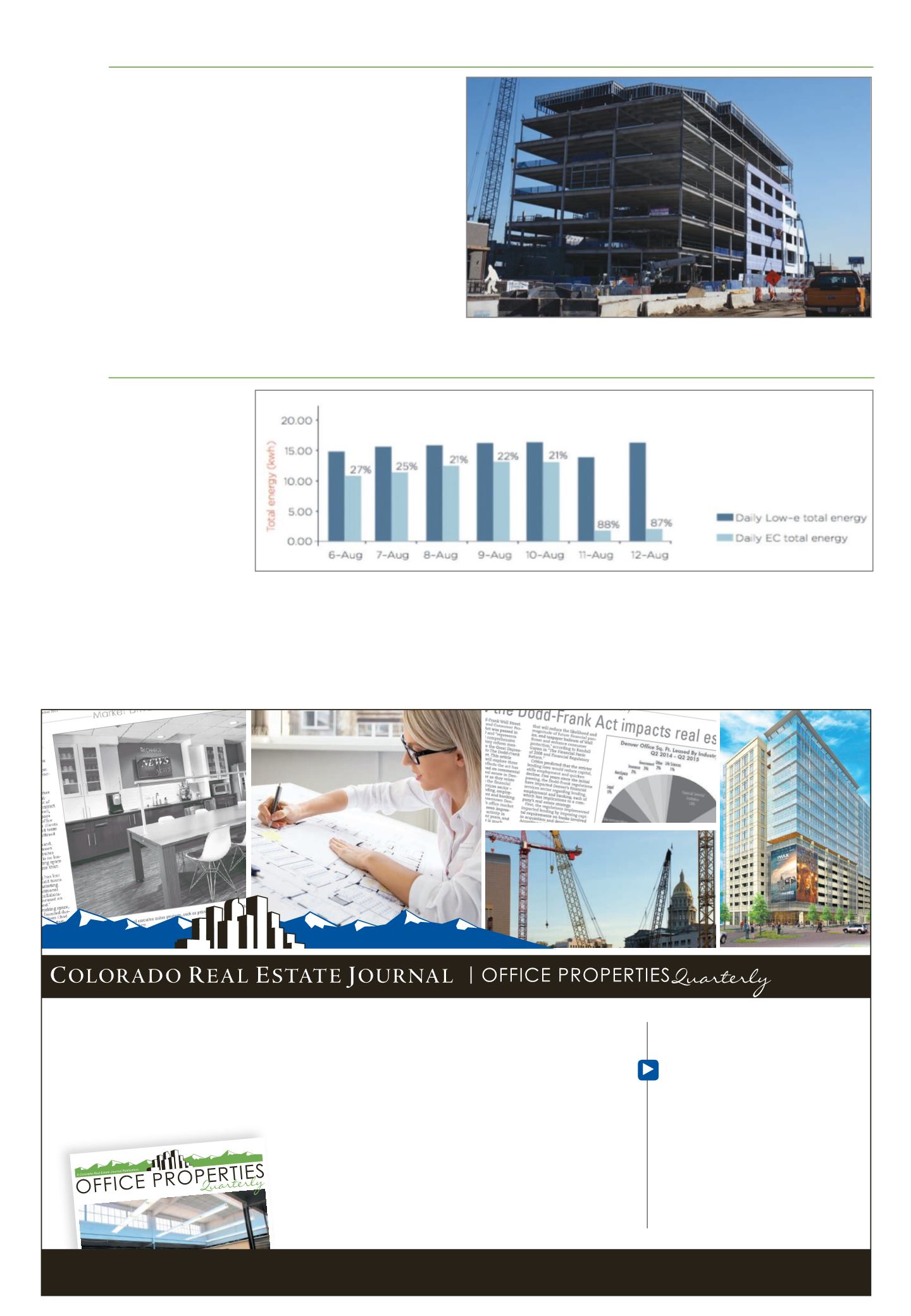

September 2017 — Office Properties Quarterly —
Page 31
www.crej.comREAD THE NEXT EDITION:
Thursday, May 17
RESERVE YOUR SPACE BY:
Wednesday, April 27
AD SIZES:
Quarter Page $XXX
Half Page $XXX
Full Page $XXX
Full Color $200 Additional
Frequency Discounts Available.
While the Colorado Real Estate Journal continues to run an office news section in each
issue of the newspaper,
Office Properties Quarterly
features the most interesting
projects and people, trends and analysis, and covers development, investment, leasing,
finance, design, construction and management. The publication is mailed with the
Colorado Real Estate Journal newspaper, a 4,000-plus distribution that includes
developers, investors, brokers, lenders, contractors, architects and property managers.
nded
Photo courtesyThriveWorkplace
nity areas and open desks.
October 2015
The evolution of
co-working in Denver
Market Reports
Development &
Investment Updates
Design & Construction
Trends
Capital Markets
Corporate Real Estate
Legal Updates
and more
ADVERTISING
Lori Golightly | 303-623-1148 x102 |
lgolightly@crej.comSUBMIT EXPERT ARTICLES
Michelle Askeland | 303-623-1148 x104 |
maskeland@crej.comMEDIA KIT & SAMPLES
crej.com/OfficePropertiesWednesday, December 20
Novevember 29
395
595
995
the way developers are approaching
the design of their buildings. The
philosophy behind WELL Building is
to elevate human health and comfort
to the forefront of building practices
and reinvent buildings that are not
only better for the planet, but also
better for people. Many develop-
ers are focusing more on achieving
WELL Building Standard certification
than LEED certification, despite their
numerous similarities.
This project has been designed to
meet the WELL Building Standard
and is on track to be the only core-
and-shell WELL certified office build-
ing in Colorado. The seven areas of
focus include air, water, nourish-
ment, light, fitness, comfort and
mind. To meet the rigorous require-
ments of WELL Building Standard,
Catalyst considered each category in
its design, and – similar to a luxury
apartment – implemented a variety
of community-focused amenities
strategically positioned throughout
its seven floors to help encourage
wellness, exercise and overall mental
clarity. For example, in addition to
open, natural floors with significant
light, the project will have a state-of-
the-art fitness center, 75 bike storage
spaces, and a monumental staircase
for floors one to four to help promote
the use of stairs instead of the eleva-
tor. This collective approach to design
will elevate the daily work experience
for the tenants and enable a highly
productive and satisfying antidote to
the daily grind.
s
Koelbel
Continued from Page 22perature on weekends due to building
vacancy and, therefore, there is no
need to cool the area as attentively.
Hence during the weekend, the set-
back temperature is set to 82° F. The
electrochromic glass system’s solar
heat gain coefficient keeps the tem-
perature inside the space so cool that
it hardly goes above 82° F during the
day, requiring minimal cooling, as
opposed to low-e glass.
When examining the impact of this
new technology on glare, it was dis-
covered that low-e glass with static
tinting reduces glare by about 40 per-
cent, which proved insufficient during
times of low sun angle and blinds/
shades were required to block the
glare. The glare problem occurs only
during times of low sun angle, which
occurs throughout the day in the
morning on the east side, mid-day on
the south side during the winter and
the afternoon on the west side.
The dynamic glass system automat-
ically adjusts the tint level starting in
the morning and throughout the day.
In its highest tint level, the dynamic
glass system reduced glare by 99 per-
cent, which is the level required to
eliminate the use of window blinds or
shades.
s
Slaught
Continued from Page 24View Dynamic Glass
Figure 2: The average total energy used on a typical August week during the study.
Dr. John Oro
Catalyst in River North is slated to open May 1.
















